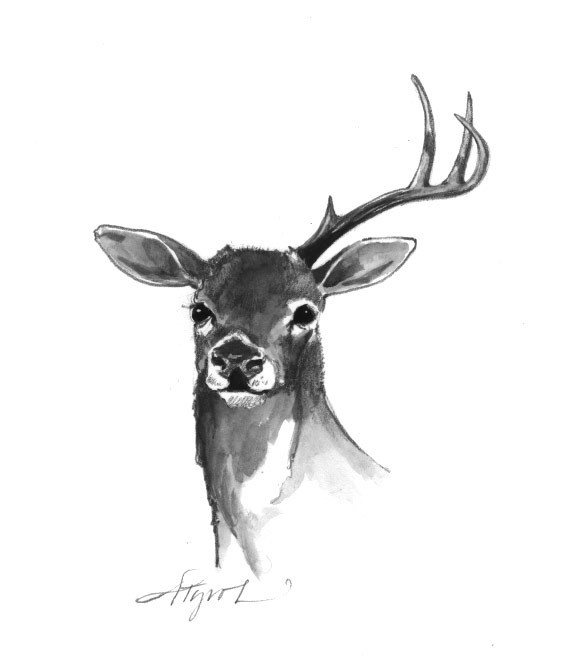
How many times in your life have you seen a deer antler? Not hanging on someone’s wall, but out in the woods?
If you answered “never,” you’re in good company. Few people have. Which, when you stop to think about it, is an amazing fact. There are tens of thousands of deer antlers shed every year in the woods around here, yet hardly anyone ever sees one. What gives?
Bucks in Vermont and New Hampshire shed their antlers sometime between late December and late January – not exactly when most of us are standing outside waiting for the big event. The short days of December trigger a decrease in a buck’s testosterone level, which in turn softens the tissue that joins the base of the antlers to the skull. Before long, a sudden movement or a tangle with a branch will cause an antler to fall off. The second usually follows within a day or two of the first, and often within a hundred yards.
Once an antler hits the ground, it doesn’t stick around for long. Rodents do the bulk of the deconstructing, but larger animals like fox, coyote, bear, and even deer themselves have been known to gnaw on antlers to capture the calcium, phosphorus, and other minerals that are otherwise in short supply on the forest floor. If you decide to wait until the warmth of June, therefore, to begin your antler search, you’ll be lucky if you even find scraps, let alone an intact antler. The time to look is now.
Forrest Hammond, a wildlife biologist with Vermont’s Department of Fish and Wildlife, and a person who rarely lets a year get away without finding at least an antler or two out in the woods, thinks this could be a good winter for finding antlers. Sort of.
“The lack of snow so far makes it a good winter to go looking for antlers. The deer won’t be confined to their yards, so you can walk in the woods without disturbing them too much,” says Hammond.
“At the same time, it’s going to be difficult to know where to look. With little snow, the deer could be anywhere, and so could the antlers.”
In a winter with deeper snow, deer congregate in “yards,” usually under the protection of conifers, where they make trails and bed down to wait for spring’s warmer weather. Walking into such a yard in search of antlers will force the deer to leave the relative safety of their yard and expend precious energy fleeing from you, which could be the difference between life and death in a harsh winter. Serious antler hunting, therefore, is not recommended in most winters.
But in an open winter like this one, the deer are not yarded up and can more easily avoid you in your quest for an antler or two. Maybe it’s time, therefore, to reconsider your antipathy towards this winter: it may not (yet) be ideal for skiing, snowshoeing, or snow-machining, but it’s been pretty good for finding antlers. Not only are you free to move about the woods but also, should you find yourself in close proximity to an antler, it will be lying on the ground instead of hidden in waist-deep powder.
So, where to start looking? As deer hunters know, a deer could be almost anywhere, anytime, so you might just stumble across an antler on your way out the back door. But some places are more likely than others. When it comes to antlers, a section of particularly thick brush is a good start, both because a buck is likely to use it for cover and because an antler is likely to snag on a branch and be pulled off.
Fencerows and streams are also hot spots, because a buck jumping and landing could lose an antler from the sudden impact. South-facing slopes are also good bets, since bucks are apt to loiter there on sunny days. Even field edges hold possibilities; if there’s food to be found out in the open, bucks may be feeding there night after night.
While you’re out searching for an antler or two, here’s something else to think about: why do bucks shed their antlers in the first place? Why do they throw away those masterful sculptures every year when it would seem that a nice, durable set of permanent horns – like those on a ram – could get the job done more efficiently? Biologists don’t know the answer for certain, though they know there must be a good reason, and they have a few theories cooking away. But that’s a story for another day. First thing’s first: go find yourself a pair!

